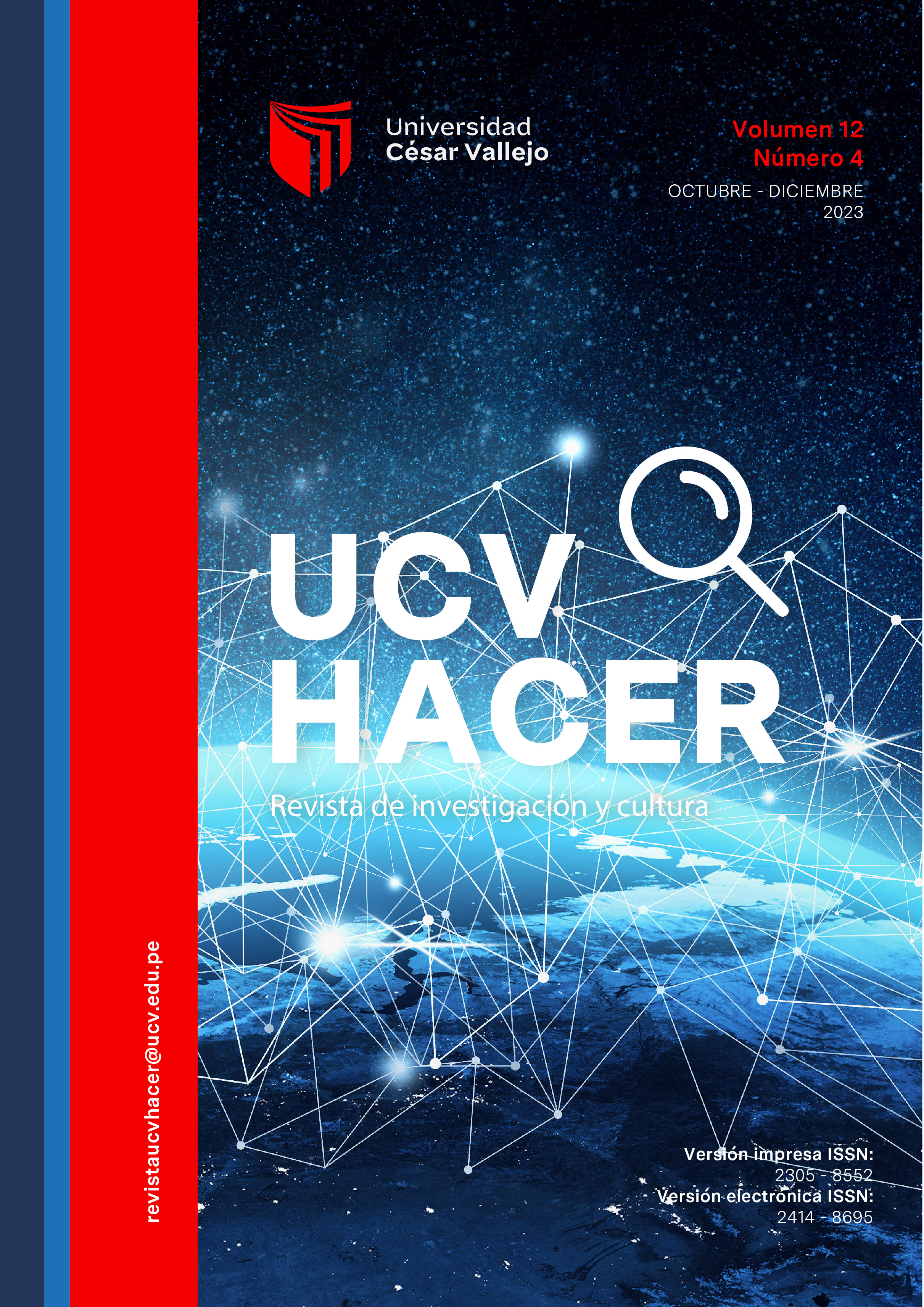Contributions of Textile Narrative as a Pedagogical Practice for the Construction of Peace and Historical Memory on a Small Scale
DOI:
https://doi.org/10.18050/revucvhacer.v12n4a1Keywords:
Textiles, Pedagogy, Armed conflict, Cultural resistance, Collective memory, Social developmentAbstract
This article explores textile narrative as an emerging pedagogical methodology in contexts marked by conflict and violence. Through initiatives such as the “memory sewing circles,” affected individuals gather to weave and embroider, using the creative act to capture painful experiences, but also as an educational tool for resistance, denunciation, and healing. These textile narratives, rooted in various cultures, facilitate the reconstruction of both individual and collective memories, strengthening cultural identity and promoting social change through creativity and collaboration. The article highlights the importance of incorporating these memory-related practices, emphasizing their potential as restorative methods that not only contribute to healing the social bonds affected by violence but also drive a pedagogical approach based on recovery, resilience, and social transformation.
References
Álvarez Castro, S., & Domínguez Lacayo, M. D. C. (2012). La expresión artística: Otro desafío para la educación rural. Revista Electrónica Educare, 16(3), 115-126. https://doi.org/10.15359/ree.16-3.7
Arango Cálad, C. (2024). La paz en Colombia: Construcción psicosocial de una pedagogía de la convivencia. Saberes y prácticas, 9(1), 1-19. https://revistas.uncu.edu.ar/ojs3/index.php/saberesypracticas/article/view/7889/6399
Bayburtlu, Ç. (2021). The Reflection of Patterns and Clothing Forms of Various Cultures on Contemporary Clothing Design; The Peruvian Example. IBAD Sosyal Bilimler Dergisi, 9, 198-226. https://doi.org/10.21733/ibad.806300
Cabrera Pérez-Armiñan, M. L. (2022). Arpilleras of Sexual and Domestic Violence in Post-War Guatemala: Accompaniment in Processes of Psychosocial Reparation. En E. Lira, M. Cornejo, & G. Morales (Eds.), Human Rights Violations in Latin America (pp. 117-133). Springer International Publishing. https://doi.org/10.1007/978-3-030-97542-5_9
Castillejo-Cuéllar, A. (2022). Cuando los pájaros no cantaban: Historias del conflicto armado en Colombia (Primera edición). Comisión de la Verdad. https://www.comisiondelaverdad.co/cuando-los-pajaros-no-cantaban
Castillejo-Cuéllar, A. (2023). Escuchar de otra manera. Oralidad y sonido en el volumen testimonial de la Comisión de la Verdad de Colombia. Estudios Políticos (Medellín), 68. https://doi.org/10.17533/udea.espo.n68a02
Catrileo, A. (2023). El arte textil mapuche como práctica pedagógica de refusal generativo. post(s), 9, 26-43. ttps://doi.org/10.18272/post(s).v9i1.2970
Centro de Memoria, Paz y Reconciliación. (2015). Oficios de la memoria. http://centromemoria.gov.co/wp-content/uploads/2020/05/LIBRO-OFICIOS-DE-LA-MEMORIA.pdf
Doolan, E. (2016). Textiles of Change: How Arpilleras can Expand Traditional Definitions of Records. InterActions: UCLA Journal of Education and Information Studies, 12(1). https://doi.org/10.5070/D4121028883
Eicher, J. B. (2001). The cultural significance of dress and textiles. Reviews in Anthropology, 30(4), 309-323. https://doi.org/10.1080/00988157.2001.9978289
Gonzáles, I. (2014). Un derecho elaborado puntada a puntada. La experiencia del costurero Tejedoras por la memoria de Sonsón. Revista Trabajo Social, 18-19, Article 18-19.
González-Arango, I. C., Villamizar-Gelves, A. M., Chocontá-Piraquive, A., & Quiceno-Toro, N. (2022). Pedagogías textiles sobre el conflicto
armado en Colombia: Activismos, trayectorias y transmisión de saberes desde la experiencia de cuatro colectivos de mujeres en Quibdó, Bojayá, Sonsón y María La Baja. Revista de Estudios Sociales, 79, Article 79.
Martínez, S. (2023). Tirar del Hilo, Subvertir el Nudo: Hibridaciones Virtuales entre los Oficios Textiles, la Pedagogía y los Afectos [Tesis de Antropología, Universidad del Rosario]. https://repository.urosario.edu.co/server/api/core/bitstreams/
e58fed12-297b-4370-873a-f22f09828e26/content
Ministerio de Salud y Protección Social. (2019, septiembre 24). Retos del sector salud y de protección social en la atención integral de las víctimas del conflicto armado en Colombia. https://www.minsalud.gov.co/proteccionsocial/Paginas/Victimas_Inicio.aspx
Postrel, V., & Luengo, L. (2021). El tejido de la civilización Cómo los textiles dieron forma al mundo. Ediciones Siruela, S.A. https://www.siruela.com/prensa.php?id_libro=4398
Pulgarín, L. (2020). El tapiz de Mampuján y sus tejedoras: El Museo Nacional de Colombia como espacio para narrativas del conflicto armado. Cuadernos de Curaduría, 119-137. https://www.museonacional.gov.co/Publicaciones/cuadernos-de-curaduria/Paginas/Forms/DispForm.aspx?ID=19&RootFolder=%2FPublicaciones%-2Fcuadernos%2Dde%2Dcuraduria%2FPaginas&Source=https%3A%2F%2Fmuseonacional%2Egov%2Eco%2FPublicaciones%2Fcuadernos%2Dde%2Dcuraduria%2FPaginas%2Fcuadernos%2Dde%2Dcuraduria%2D16%2Easpx
Rubio, G. (2012). El pasado reciente en la experiencia chilena: Bases para una pedagogía de la memoria. Estudios pedagógicos (Valdivia), 38(2), 375-396. https://doi.org/10.4067/S0718-07052012000200023
Sánchez-Aldana, E., Pérez-Bustos, T., & Chocontá-Piraquive, A. (2019). ¿Qué Son Los Activismos Textiles?: Una Mirada Desde Los Estudios Feministas a Catorce Casos Bogotanos. Athenea Digital. Revista de Pensamiento e Investigación Social, 19(3), 1-24. https://atheneadigital.net/article/view/v19-3-sanchez-perez-choconta
Whaley, D. (2023, marzo 24). Tramar desde los tiempos textiles. Jardinlac. https://www.jardinlac.org/post/tramar-desde-los-tiempos-textiles
Downloads
Published
How to Cite
Issue
Section
License
Copyright (c) 2023 Gabriela M. Cano Salazar, Orlando Scoppetta

This work is licensed under a Creative Commons Attribution 4.0 International License.










